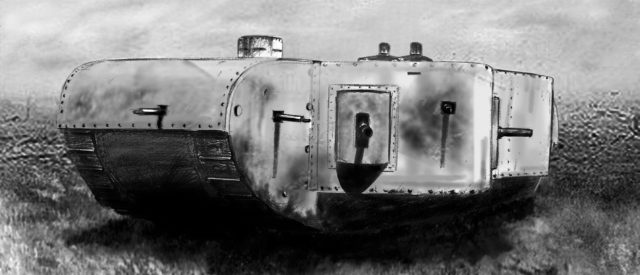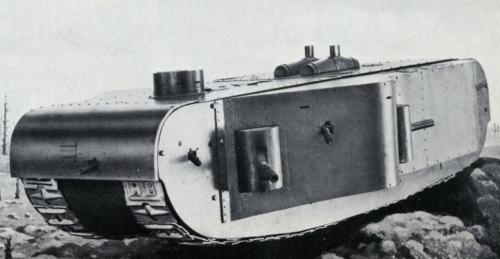It looked like a giant landship and was way ahead of its time: according to military historians, the ‘K-Wagen,’ also known as the Grosskampfwagen, was a German Super-heavy tank introduced during the First World War.
However, the first two prototypes were only ready for testing by the time War had already ended.

The First World War, as it turns out, significantly accelerated the manufacturing of armored vehicles and tanks – as they were later called – essentially starting a tank manufacturing war between German and British manufacturers.
Before the very first A7V tanks had been war-readied, the German War Ministry ordered the manufacturers to develop a new super heavy machine, a tank intended to be utilized in break-through situations during a battle.
Joseph Vollmer, a reserve captain and engineer of Verkehrstechnische Prufungskommission, was heading the design team on the super-tank along with another engineer Captain Weger.

After the approval of the German War Ministry in June 1917, the ministry followed up with the manufacturer ordering at least ten example, five of which to be built by the Riebe ball-bearing factory located in Berlin while the other five were produced by Wemann & Co. of Kassel.
The initial design was enormous and weighed upwards of 165 tons, which consequently caused more problems for other aspects of the design. Hence it was reduced to a more practicable weight of 120 tons; this was achieved by shortening the length of the machine which significantly reduced the weight of the entire structure.
Despite the massive reduction, the K-Wagen was still gigantic, and its large size and mass made it practically impossible to transport.
The manufacturers then had to adhere to a time-consuming method of splitting the K-Wagen into smaller sections to transport by rail and then to be reassembled behind the front line where it was meant to be deployed.
At the request of Hindenburg, two functioning prototypes were built and the tank was almost complete and ready for deployment by the end of the war.

To have an idea of the enormity of the K-Wagen, consider a structure capable of carrying 27 men armed with seven MGo8 machine guns and four 77 mm fortress guns. These 27 men include one commander, two drivers, an artillery officer, a signaller, eight machine gunners, 12 artillerymen and two mechanics. During the beginning stages, the incorporation of a number of flamethrowers was also considered but was later scrapped due to the lack of space in the tank.

The hull of the giant tank consisted of six large modules that could be separated and then transported by rail: the fighting room, the control room, the transmission room, the engine room and two sponsors.
The commander of the tank had to send the messages and commands using a set of electric lights.
The fire control system of K-Wagen was very much like that of a destroyer; German commanders thought of the machine as a veritable and effective ‘landship’.
One limitation in the K-Wagen was that the driver had no clue where the machine was heading: to steer the tank effectively the drivers had to entirely rely on the instructions given by the commander.
